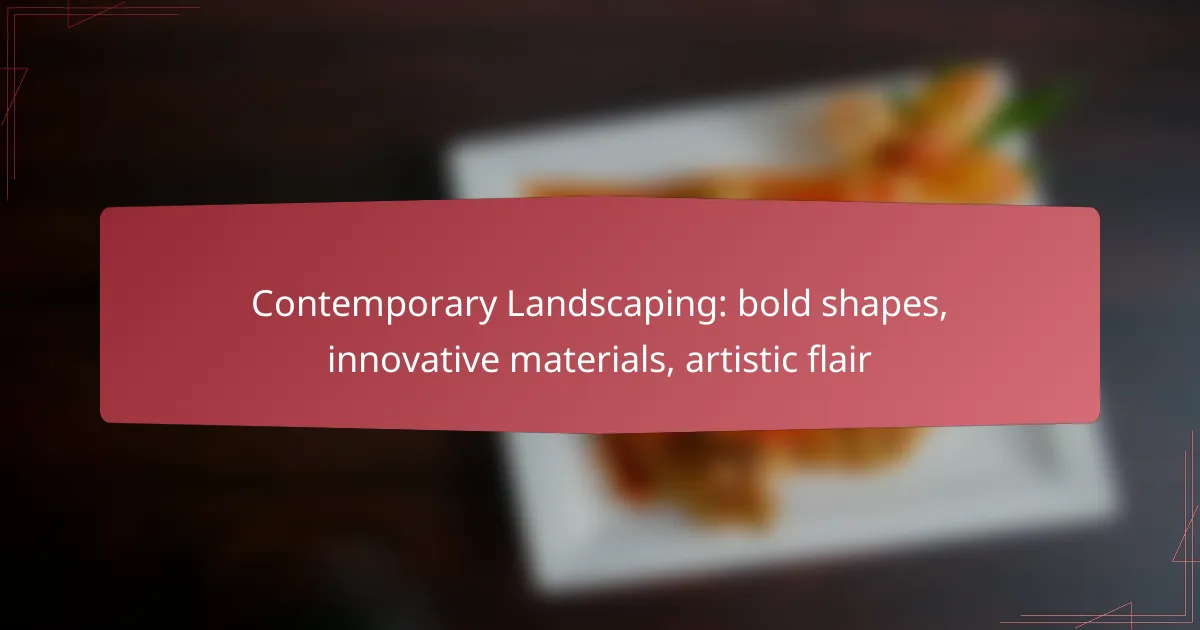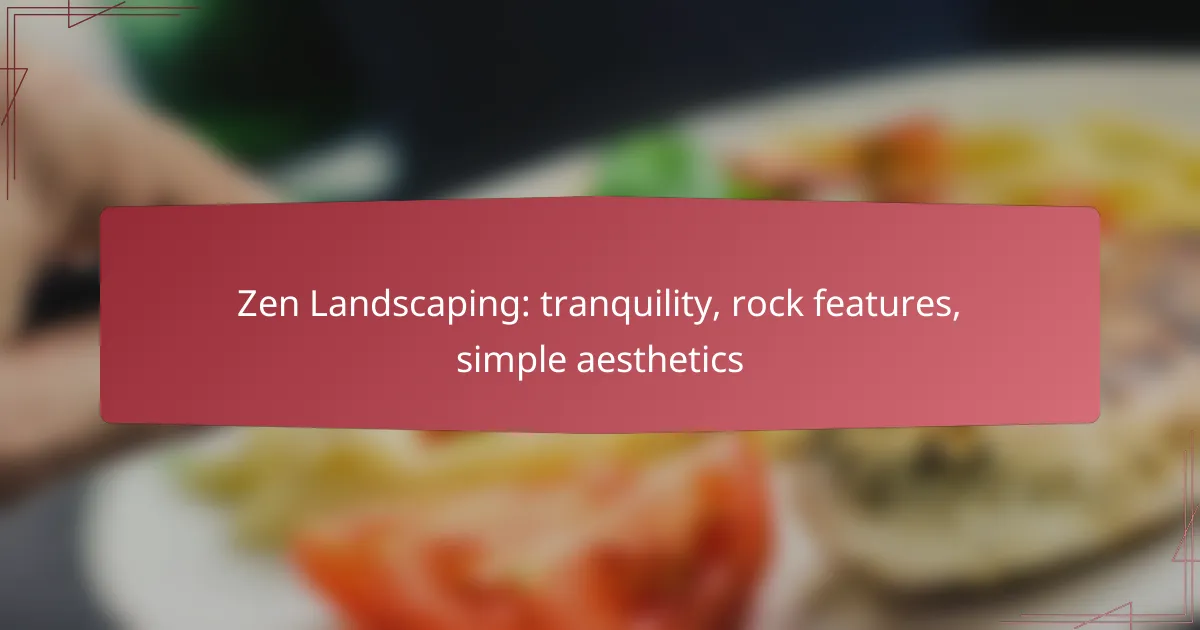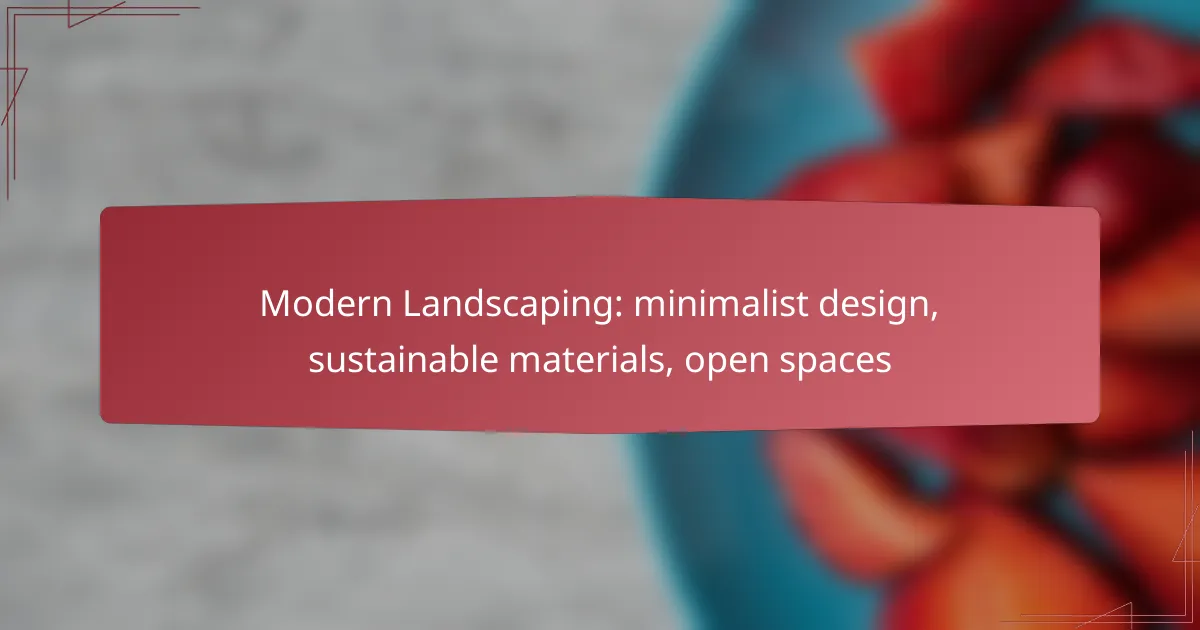Contemporary landscaping redefines outdoor spaces by incorporating bold shapes, innovative materials, and artistic flair. This approach not only enhances visual appeal but also fosters relaxation and social interaction in urban environments. By utilizing unique materials such as recycled composites and natural stone, designers create striking landscapes that blend functionality with aesthetic beauty.
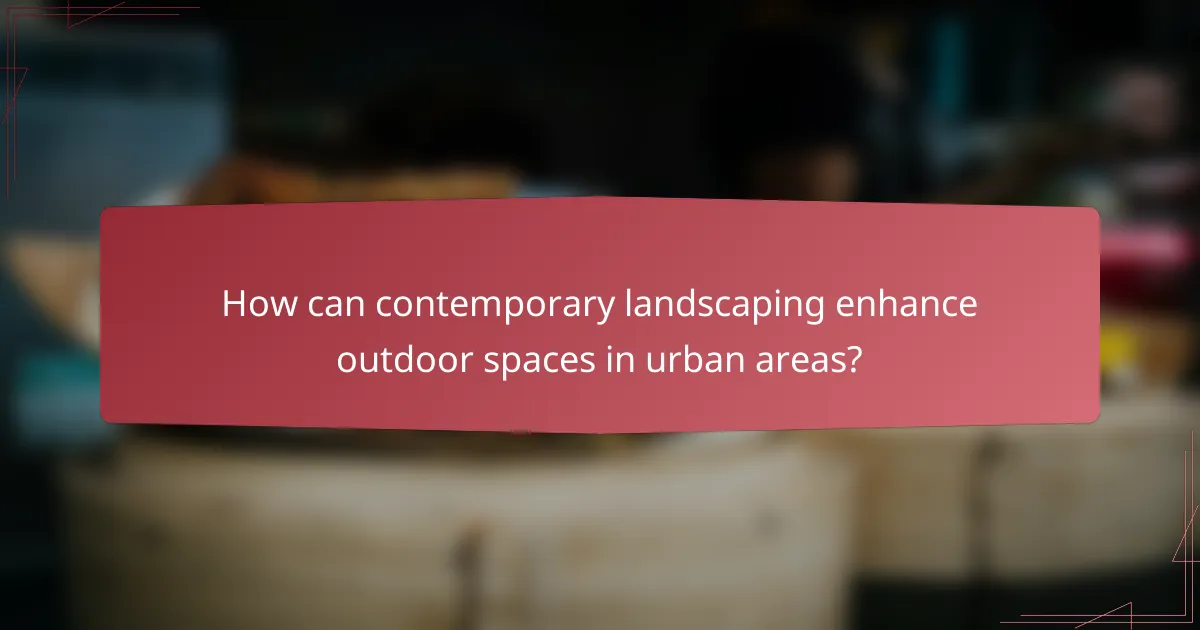
How can contemporary landscaping enhance outdoor spaces in urban areas?
Contemporary landscaping can significantly enhance urban outdoor spaces by integrating bold designs, sustainable materials, and artistic elements. These features create visually appealing environments that promote relaxation and social interaction while maximizing limited space.
Bold geometric designs
Bold geometric designs are a hallmark of contemporary landscaping, offering a modern aesthetic that can transform any urban area. By using sharp lines and defined shapes, such as squares, circles, and triangles, these designs create a sense of order and structure.
Consider incorporating raised beds, angular pathways, or patterned paving stones to achieve this look. These elements not only enhance visual interest but also help delineate different areas within a space, making it feel more organized and functional.
Innovative use of sustainable materials
Utilizing sustainable materials is essential in contemporary landscaping, especially in urban settings where environmental impact is a concern. Options like reclaimed wood, permeable pavers, and recycled metal can reduce waste and promote eco-friendliness.
When selecting materials, look for those that require minimal maintenance and are durable enough to withstand urban conditions. For example, using permeable surfaces can help manage stormwater runoff, contributing to a healthier urban ecosystem.
Artistic focal points
Artistic focal points serve as eye-catching features that draw attention and enhance the overall design of outdoor spaces. These can include sculptures, water features, or unique plant arrangements that reflect the personality of the space.
Incorporating local artists’ work or culturally significant pieces can create a sense of community and identity. Ensure that these focal points are strategically placed to complement the surrounding landscape while providing visual breaks in the design.
Functional outdoor living areas
Creating functional outdoor living areas is a key aspect of contemporary landscaping that maximizes usability in urban environments. These spaces can include outdoor kitchens, seating areas, or fire pits, allowing residents to enjoy their outdoor spaces year-round.
When designing these areas, consider the flow of movement and how different elements interact with each other. For instance, placing seating near a grill or fire pit encourages social gatherings, while ensuring adequate shade and shelter enhances comfort during various weather conditions.
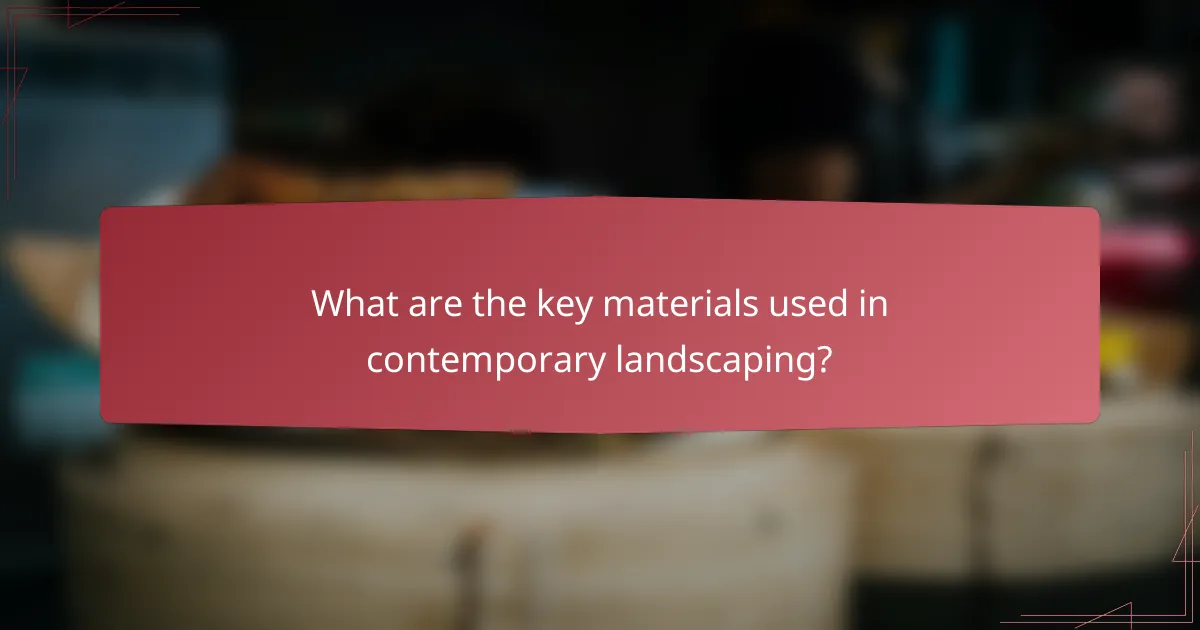
What are the key materials used in contemporary landscaping?
Contemporary landscaping utilizes a variety of innovative materials that emphasize bold shapes and artistic expression. Key materials include recycled composites, natural stone, and metal accents, each offering unique benefits and aesthetic qualities.
Recycled composites
Recycled composites are made from repurposed materials like plastics and wood fibers, providing an eco-friendly option for landscaping. They are durable, resistant to weathering, and often require less maintenance than traditional materials.
When considering recycled composites, look for products that meet sustainability certifications. They come in various colors and textures, allowing for creative designs that can mimic natural materials while reducing environmental impact.
Natural stone
Natural stone is a timeless choice in contemporary landscaping, known for its durability and aesthetic appeal. Options like granite, limestone, and slate can be used for pathways, walls, and decorative features, providing a natural look that blends well with outdoor environments.
When selecting natural stone, consider factors such as local availability and cost, as prices can vary significantly based on region. Proper installation is crucial to ensure longevity, so hiring a professional may be advisable for larger projects.
Metal accents
Metal accents, such as corten steel or aluminum, add a modern touch to landscaping designs. They can be used in features like planters, trellises, or edging, providing contrast against softer materials like wood and plants.
Choose metals that are weather-resistant to prevent rust and corrosion. Incorporating metal elements can enhance the overall design while offering structural benefits, making them a popular choice for contemporary landscapes.

How do bold shapes influence landscape design?
Bold shapes play a crucial role in landscape design by creating striking visual elements that capture attention and define the overall aesthetic. These geometric forms can transform ordinary spaces into extraordinary environments, enhancing both functionality and beauty.
Creating visual interest
Incorporating bold shapes into landscape design adds layers of visual intrigue. Curved pathways, angular terraces, and geometric planting beds can create focal points that draw the eye and encourage exploration. For instance, using a circular seating area surrounded by triangular planters can create a dynamic contrast that enhances the landscape’s appeal.
Consider using materials like concrete or corten steel to emphasize these shapes. Their clean lines and modern finishes can further accentuate the boldness of the design, making the landscape stand out in any setting.
Defining spaces
Bold shapes are effective in delineating different areas within a landscape. For example, a rectangular deck can separate a dining area from a garden, providing clear boundaries while maintaining an open feel. This spatial definition helps users understand the layout and purpose of each section.
Utilizing raised beds or sculptural elements can also create natural divisions. These features not only serve functional purposes but also contribute to the overall artistic expression of the landscape.
Enhancing flow and movement
Bold shapes can guide movement through a landscape, influencing how people navigate the space. Curved pathways can lead visitors on a journey, encouraging them to explore various areas, while straight lines can create a sense of direction and purpose. This strategic placement of shapes can enhance the overall experience.
When designing pathways, consider the width and curvature. Wider paths with gentle curves can promote a leisurely stroll, while narrower, more angular paths may encourage quicker movement. Balancing these elements is key to creating a harmonious flow throughout the landscape.

What are the benefits of hiring a local landscaping service?
Hiring a local landscaping service offers numerous advantages, including tailored expertise in regional flora and efficient project management. Local professionals understand the specific conditions and regulations of your area, ensuring your landscaping meets both aesthetic and practical needs.
Expert knowledge of regional plants
Local landscaping services possess in-depth knowledge of plants that thrive in your specific climate and soil conditions. This expertise allows them to recommend the best species for your garden, ensuring sustainability and minimal maintenance.
For example, a landscaping service in Florida will know to suggest drought-resistant plants that can withstand the heat, while a service in the Pacific Northwest may focus on native plants that flourish in moist environments.
Understanding local regulations
Local landscapers are familiar with zoning laws, permits, and environmental regulations that can affect your landscaping project. This understanding helps avoid potential legal issues and ensures compliance with local standards.
For instance, certain areas may have restrictions on tree removal or require permits for irrigation systems. A knowledgeable local service can navigate these regulations efficiently, saving you time and hassle.
Quick response times
When you hire a local landscaping service, you benefit from quicker response times due to their proximity. This can be crucial for urgent matters, such as storm damage or pest control issues that need immediate attention.
Additionally, local services can often schedule consultations and project installations more rapidly, allowing you to enjoy your newly landscaped space sooner. This responsiveness can be a significant advantage over larger, national companies that may have longer wait times.

What should you consider when selecting a landscaping contractor?
When selecting a landscaping contractor, prioritize their experience, expertise, and ability to align with your vision. Consider their portfolio, client feedback, and their understanding of contemporary landscaping trends to ensure a successful project.
Portfolio of past projects
A strong portfolio showcases a contractor’s design style and versatility. Look for examples that reflect bold shapes, innovative materials, and artistic flair, which are key elements in contemporary landscaping. Check if their previous work aligns with your aesthetic preferences and functional needs.
Request to see a variety of projects, including residential and commercial spaces, to gauge their adaptability. This will help you understand their capability to handle different scales and styles, ensuring they can meet your specific requirements.
Client testimonials
Client testimonials provide insight into a contractor’s reliability and quality of work. Seek feedback on their communication, adherence to timelines, and overall satisfaction with the completed projects. Positive reviews can indicate a contractor’s commitment to excellence.
Consider reaching out to past clients for direct conversations about their experiences. This can reveal important details about the contractor’s approach, problem-solving skills, and how well they manage budgets, which is crucial for avoiding unexpected costs during your landscaping project.
